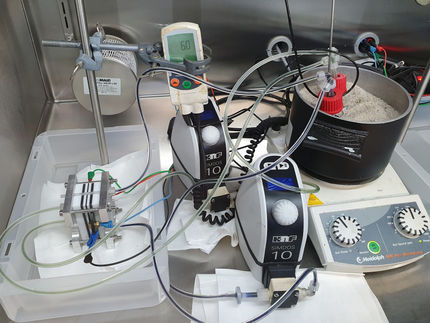In the wake of high-profile battery fires, a safer approach emerges
Advertisement
As news reports of lithium-ion battery (LIB) fires in Boeing Dreamliner planes and Tesla electric cars remind us, these batteries — which are in everyday portable devices, like tablets and smartphones — have their downsides. Now, scientists have designed a safer kind of lithium battery component that is far less likely to catch fire and still promises effective performance. They report their approach in the Journal of the American Chemical Society.
Lynden Archer, Geoffrey Coates and colleagues at Cornell University explain that the danger of LIBs originates with their electrolytes, the substance that allows ions to flow between the electrodes of the battery. The electrolyte usually contains a flammable liquid. To minimize this fire hazard, some researchers are developing more stable, solid electrolytes. But although solid electrolytes are less likely to fuel a fire, their ability to transport ions has fallen short, especially at room temperature. Coates's team set out to tackle both issues and come up with a safer, high-performance battery component, while Archer's team studied the electrochemical characteristics of the materials.
The team's efforts have led to a new family of solid polymer electrolytes that is both good at conducting lithium ions at room temperature and minimizing the risk of fire. Not only are these materials safer than their liquid counterparts in LIBs, but they could also be used in high-energy lithium-metal batteries, such as promising lithium-sulfur and lithium-air batteries.
Other news from the department science
Most read news
More news from our other portals
See the theme worlds for related content
Topic World Battery Technology
The topic world Battery Technology combines relevant knowledge in a unique way. Here you will find everything about suppliers and their products, webinars, white papers, catalogs and brochures.

Topic World Battery Technology
The topic world Battery Technology combines relevant knowledge in a unique way. Here you will find everything about suppliers and their products, webinars, white papers, catalogs and brochures.





























































